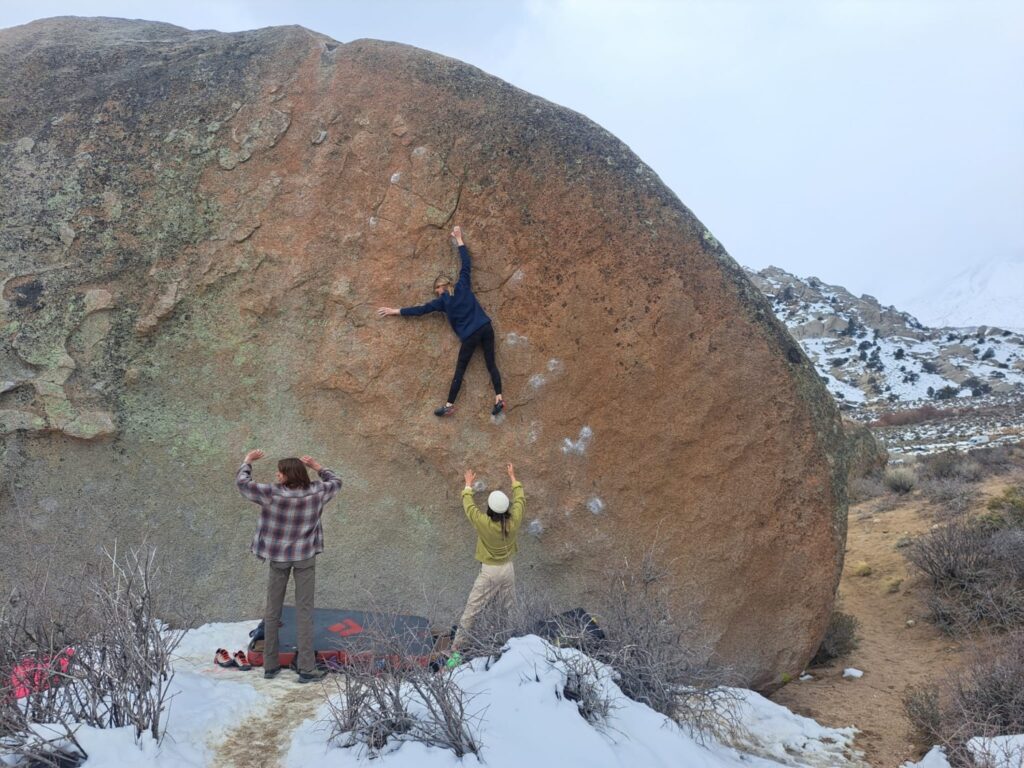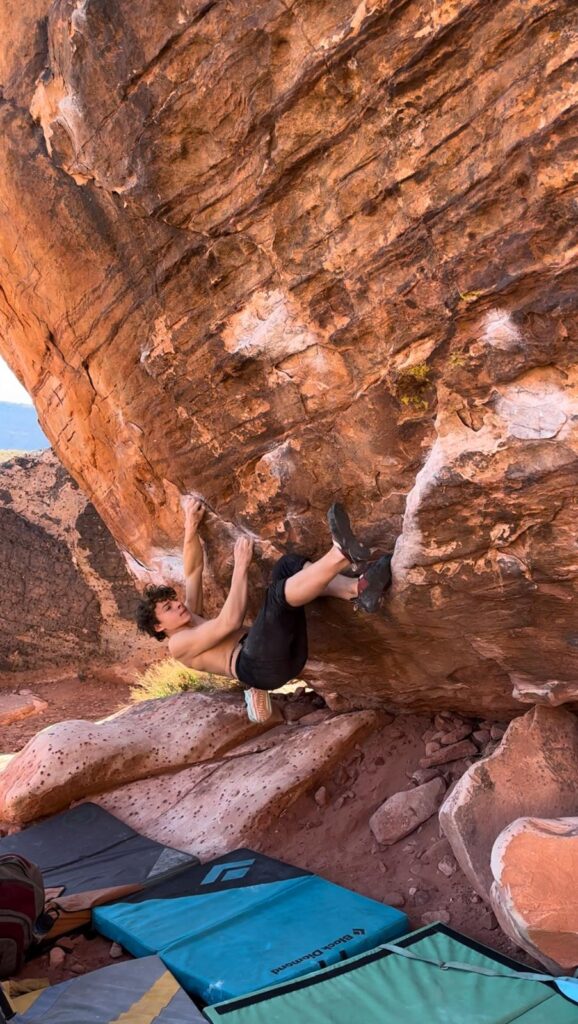Just as they say that behind every great sport climbing send is a great belayer – behind every great boulder ascent is an attentive spotter. In sport climbing, belayers play a key role in getting their climber up the wall. Spotters are equally essential to bouldering. Below are a few key tips for being a rock star spotter, keeping yourself and the climber safe.

Communication
A foundational element of many aspects of life, communication between a spotter and climber is essential to a positive experience. This starts before anyone begins climbing. Spotters and climbers should talk about items such as pad placement & movement, how to pad uneven aspects of the landing, anticipated fall zones, where cruxes are, and the intention of each go (a muerte or sussing out a move or two). Communication also occurs while a climber is on a boulder. This could be in the form of encouragement, spotters communicating on moving pads – or themselves, or a climber noting if they’re hopping – or falling – off a problem.
Pad Placement
Like communication, this starts before a climber hops on their selected problem. Discuss the way you want the pads arranged, taking note of uneven areas in the landing, where a climber is most likely to fall, and if pads need to be moved around during a climb due to a problem traversing or being really overhanging. This may include which pads stay “fixed” and which are the ones to be moved. Don’t be afraid to adjust the pads during a go or between goes if they move after a fall. And don’t be afraid to change the placement if someone falls in an unanticipated place after an attempt.
Stay Flexible
This ties into pad placement. Move the pads around if you notice the climber falling in a section you hadn’t anticipated as a fall zone. And move yourself around if the problem traverses or has a large area that needs coverage and spotting. Keep in mind the following in order to do these pieces hazard-free:
- Keep the area free of gear, bags, and other paraphernalia; this allows you to move pads freely and walk around without worry of tripping
- Drag pads by the corners instead of throwing them to avoid hitting the climber, adding distraction, or knocking needed pads out of position
Body Position
Your positioning as a spotter is very important in order to keep yourself safe and better protect the climber. Adopt a wide, slightly offset stance for the most stability. Keep your knees bent. This allows you the most stability and allows the knees to take the brunt of the force as you spot and if you’re knocked off balance when a climber falls. Additionally, be aware of your hands and remember the “spoons not forks” motto. Keep fingers together and thumbs in, protecting your own digits for climbing.
Protect the Neck
Although you don’t want any part of a climber to be injured, it’s most important to protect the neck and head. As a climber falls, make sure that their head and neck stay upright and don’t hit the ground. If they start falling head first into an obstacle, push them towards the center of the pad.

Spotting is an art. Remembering these 5 key tips will help TCA students be black belt level spotters as well as black belt level boulderers.